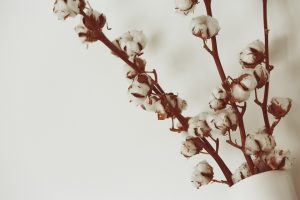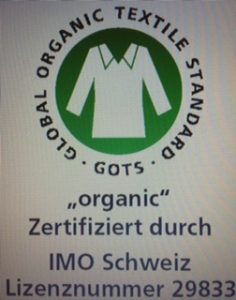Currently there are many shops that promote their new “organic cotton series”. But are these clothes really in any way better and more organic than others? Yes, they are better than “normal” clothes because the y really need less water and use fewer pesticides in the cultivation. Well, actually, in organic cotton clothes there should not be any pesticides, right? The thing is that most of these clothes are blended, which means that only a part of it is organic and the other part is just normal conventional cotton. Another thing you have to bear in mind is that cultivation is only one part of the whole production chain.
y really need less water and use fewer pesticides in the cultivation. Well, actually, in organic cotton clothes there should not be any pesticides, right? The thing is that most of these clothes are blended, which means that only a part of it is organic and the other part is just normal conventional cotton. Another thing you have to bear in mind is that cultivation is only one part of the whole production chain.
In a production chain you have many different steps and during each step more and more chemicals and pesticides are added. First comes of course the cultivation but then there are still so many other steps: the spinning, the sewing, the washing, the dying, and so on… So when a piece of clothing is made with organic cotton you could still find many pesticides inside it.
To be really sure that you buy something that is through an d through organic you can look at different labels. One I’m going to tell you about is called “GOTS”, which means Global Organic Textile Standard. GOTS is known as the world’s best standard for textiles made from organic fibres. It has very strict criteria and if you are a member of this standard you are tested annually by an independent third party. But what does GOTS actually require from the members and the production?
d through organic you can look at different labels. One I’m going to tell you about is called “GOTS”, which means Global Organic Textile Standard. GOTS is known as the world’s best standard for textiles made from organic fibres. It has very strict criteria and if you are a member of this standard you are tested annually by an independent third party. But what does GOTS actually require from the members and the production?
The standard is subdivided into two label-grades. In the 1st label-grade, 95% of the material has to be out of certified organic fibres, and the rest can be non organic or synthetic fibres. The 2nd label-grade requires 70% or more certified organic fibres. Generally non-organic fibres are allowed in the other 30% but only 10% are allowed to be synthetic. Often the second label-grade is used for underwear and leggings because they need more synthetic fibres to keep the shape. Cotton always has to be organic. It’s not permitted either to have a part organic and a part non organic of the same fibre.
Also very important to know is that all manufacturers that are certified with GOTS have to stick to the key norms of the International Labour Organisation (ILO). Their standard says for example that there must not be child labour, the working conditions have to be save and hygienic and that cruel and inhuman treatment is forbidden. So you can be sure that neither you, nor the textile workers are harmed.
There are quite a view shops in Graz that sell really cool GOTS certified clothes. Some you could have heard of are: Göttin des Glücks, Weltladen, Chic Ethic, Grüne Erde, Grün Bunter Laden, Perviva, and even K&Ö sells clothes that are organic from the brands Armedangels, People Tree and more…
So when you go s hopping the next time, just look out for this logo and check whether the certifier, the license number and the label grade is given. If all that applies you can be sure that you buy something that is produced organically.
hopping the next time, just look out for this logo and check whether the certifier, the license number and the label grade is given. If all that applies you can be sure that you buy something that is produced organically.
If you want to know more detailed information about this topic, follow my sources:
https://www.global-standard.org/
Or watch the short video:
https://www.global-standard.org/information-centre/gots-simple-show-clip.html

